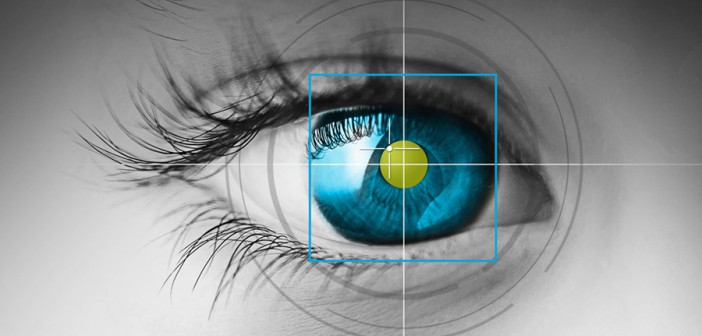Advertising may be about to get a whole lot more targeted following a patent application by Apple being granted by the US Patent and Trademark Office yesterday.
Titled “Gaze Detection in A 3D Mapping Environment”, the eye tracking invention enables users to control objects on screen with their eyes alone.
Gaze Technology was an important topic of discussion at SXSW. California-based software company, Maxon Computer Inc presented its new design training site for 3D artists, Cineveristy, at the Expo Next Stage.
Committed to empowering designers to learn the tools necessary to make interactive content effective, Maxon highlighted gaze control technology as a key area in need of further innovation.
Temple Gates Games is in agreement. Its panel, Game Design for VR Pioneers, focused on the topic. They say that with VR, the trick for content creators is not only to produce an amazing experience, but also strategically capture the viewer’s gaze while he/she is effectively let loose in an open 360-degree space, and direct it along the path of the narrative or product placement, as the case may be.
Currently the technology doesn’t allow for that.
Outside the research and testing context, advertising has started to explore other ways it can better target its communications via tracking technology.
During the summer of 2015, a poster campaign was launched for a fictitious coffee brand called Bahio that captured the movements of passersby and tailored the ad in response.
Equipped with a Microsoft Kinect camera, the poster alternated between a handful of designs and tracked people’s reaction by scanning facial expressions and categorizing them as either happy, sad or neutral.
Those that consistently fetched a neutral or sad face were eventually filtered out.
The Bahio campaign was an interesting experiment, but shows significant limitations of current technologies. The facial scanning assessed no more than 12 people at one time and crudely bucketed their emotions into three groups.
Not only is this breadth of emotion woefully inadequate, but also the scanning itself is incredibly blunt as a tool. Without identifying the subject of the viewer’s gaze, it is hard to prove that one’s facial expression is in response to the poster, as opposed to a person walking by, for example.
But as tech giants like Apple invest in gaze technology, tracking becomes more powerful, less expensive, and the prospect of brands designing campaigns that accurately assess consumer engagement becomes far more attainable.
While it’s clear why advertisers might want to make this future a reality, consumers who are increasingly concerned about surveillance and data privacy may not look ahead with as much optimism.
Brands who are preparing for the moment when gaze technology is a viable targeting tool at their disposal should think long and hard about how they will track their consumers and what they will do with their personal data.
Those who act capriciously risk alienating their audience.

